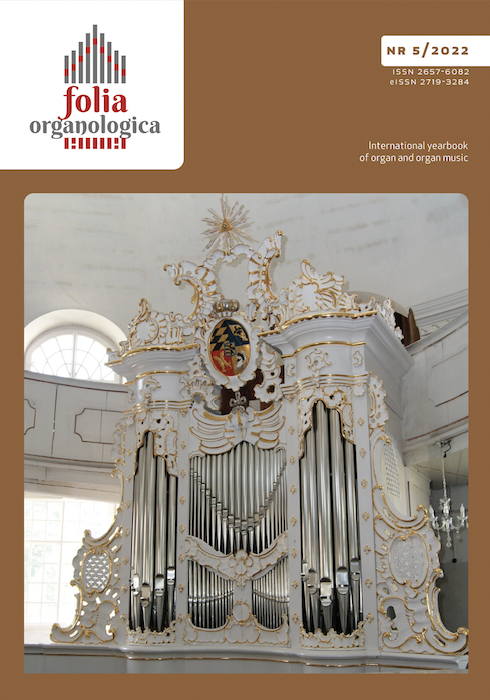Organs as an exemplification of the material heritage of Montenegrin culture Part. 2: St. Nicholas’ Church and the Church of Our Lady of the Rock in Perast
Organs as an exemplification of the material heritage of Montenegrin culture Part. 2: St. Nicholas’ Church and the Church of Our Lady of the Rock in Perast
Author(s): Grzegorz PoźniakSubject(s): History, Fine Arts / Performing Arts, Cultural history, Music, History of Art
Published by: Uniwersytet Opolski
Keywords: organs; Montenegro; Italian tradition; Balkan tradition; organ building
Summary/Abstract: Montenegro became a union republic of the Socialist Republic of Yugoslavia (1945–1992) afterthe Second World War and the political changes and wars in the Balkans at the turn of the 20thand 21st century. Montenegro proclaimed its independence on 3rd June 2006. As an independentstate, this former republic of socialist Yugoslavia takes action to gather and scientifically describe itsremarkable cultural heritage. In 2019 Cetinje Academy of Music, which is part of the University ofMontenegro, decided to carry out a scientific project aimed at depicting this entire cultural heritage.Folk culture and Orthodoxy are the dominant features of this whole opus, thus it is not surprising that cultural products are mostly associated with these two cultural factors. Catholics constitutea group of about 3.5%, which amounts to a relatively small number of believers. Though they area small community, they also left their mark on culture. One of the important factors in the Catholicworship is the pipe organ. This article is a second part of the texts on organs in Montenegro, inwhich organs from two churches in Perast were described: St. Nicholas’ Church and the Churchof Our Lady of the Rock. Both churches contain two small instruments displaying predilectionsto Italian organ building, which left its mark on the eastern Adriatic coast. Political contacts withVenice and cultural relations strongly influenced this part of the Balkans, including organ building.However, the history of organ building at the Bay of Kotor and, more generally, in Montenegroremains highly unrecognised. With a high degree of likelihood, due to the existing knowledge itcan be concluded that the region does not have its own distinct tradition of organ building. Nevertheless,there is an evident tradition of organ music performance dating back to the 16th century,which is supported by numerous references to organists in various archives. Boka Kotorska belongedto the Dalmatian cultural circle. In this region, the organist Petar Nakić (1694–1769; Italianversion of his name: Pietro Nacchini or Nachielli) and his school of organ-building left their mark.Both instruments from the churches of Perast were damaged by the passage of time as well asthe lack of professional repairs preceded by an instrumentological analysis of the existing material.Yet, it appears despite the circumstances that these organs have largely retained their originality andrestoring them to full working order is a challenge of the present day. There can be no ad hoc rectificationof defects in this case. A comprehensive organ-building intervention at the highest level ofexpertise is highly required. Therefore, on the basis of some international funds (after all, Europebegins in village churches) it could be sensible to entrust the organ renovation and all the precedingand following scientific activities to people and institutions from outside Montenegro, but onlyand exclusively with the aim of forming the nucleus of Montenegrin instrumentology (includingorganology) and organ building.
Journal: Folia Organologica. International yearbook of organ and organ music
- Issue Year: 2022
- Issue No: 5
- Page Range: 54-61
- Page Count: 8
- Language: English

